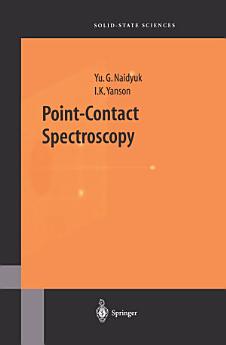Point-Contact Spectroscopy
Yu.G. Naidyuk · I.K. Yanson
apr 2019 · Springer Series in Solid-State Sciences Libro 145 · Springer
Ebook
297
pagine
reportValutazioni e recensioni non sono verificate Scopri di più
Informazioni su questo ebook
The main goal of solid-state physics is investigation of the properties of the matter including the mechanical, electrical, optical, magnetic, and so on with the aim of developing new materials with defined characteristics. Nowadays, the synthesis of superconductors with high critical temperature it consists of or fabrication of new heterostructures on the base of semiconductors, in cre ation of layered, amorphous, organic, or nanofabricated structures and many others. To do all of these, the various methods of investigation are developed during the past. Because it is impossible to find an universal method to in vestigate a variety of materials, which are either conducting or insulating, crystalline or amorphous, thin-layered or bulk, magnetic or segnetoelectric, and so on, various kind of spectroscopies, like optical, neutron, electron, tun nel and so on, are widely used in solid-state physics. Recently, a new type of spectroscopy, namely, the Point-Contact Spectroscopy (PCS), was designed for study of the conduction-electron interaction mechanism with a whole class of elementary excitations in the solids. In PCS, a small constriction, about a few nanometers large, between two conductors plays a role of a spectrome ter. Namely, because of inelastic scattering of accelerated electrons, the I - V characteristic of such a tiny metallic contact is nonlinear versus an applied voltage and its second derivative surprisingly turns out to be proportional to the electron-quasiparticle-interaction spectrum.
Informazioni sull'autore
Both authors are affiliated with the B. Verkin Institute for Low Temperatire Physics and Engineering, National Academy of Sciences of Ukraine.
Valuta questo ebook
Dicci cosa ne pensi.
Informazioni sulla lettura
Smartphone e tablet
Installa l'app Google Play Libri per Android e iPad/iPhone. L'app verrà sincronizzata automaticamente con il tuo account e potrai leggere libri online oppure offline ovunque tu sia.
Laptop e computer
Puoi ascoltare gli audiolibri acquistati su Google Play usando il browser web del tuo computer.
eReader e altri dispositivi
Per leggere su dispositivi e-ink come Kobo e eReader, dovrai scaricare un file e trasferirlo sul dispositivo. Segui le istruzioni dettagliate del Centro assistenza per trasferire i file sugli eReader supportati.







